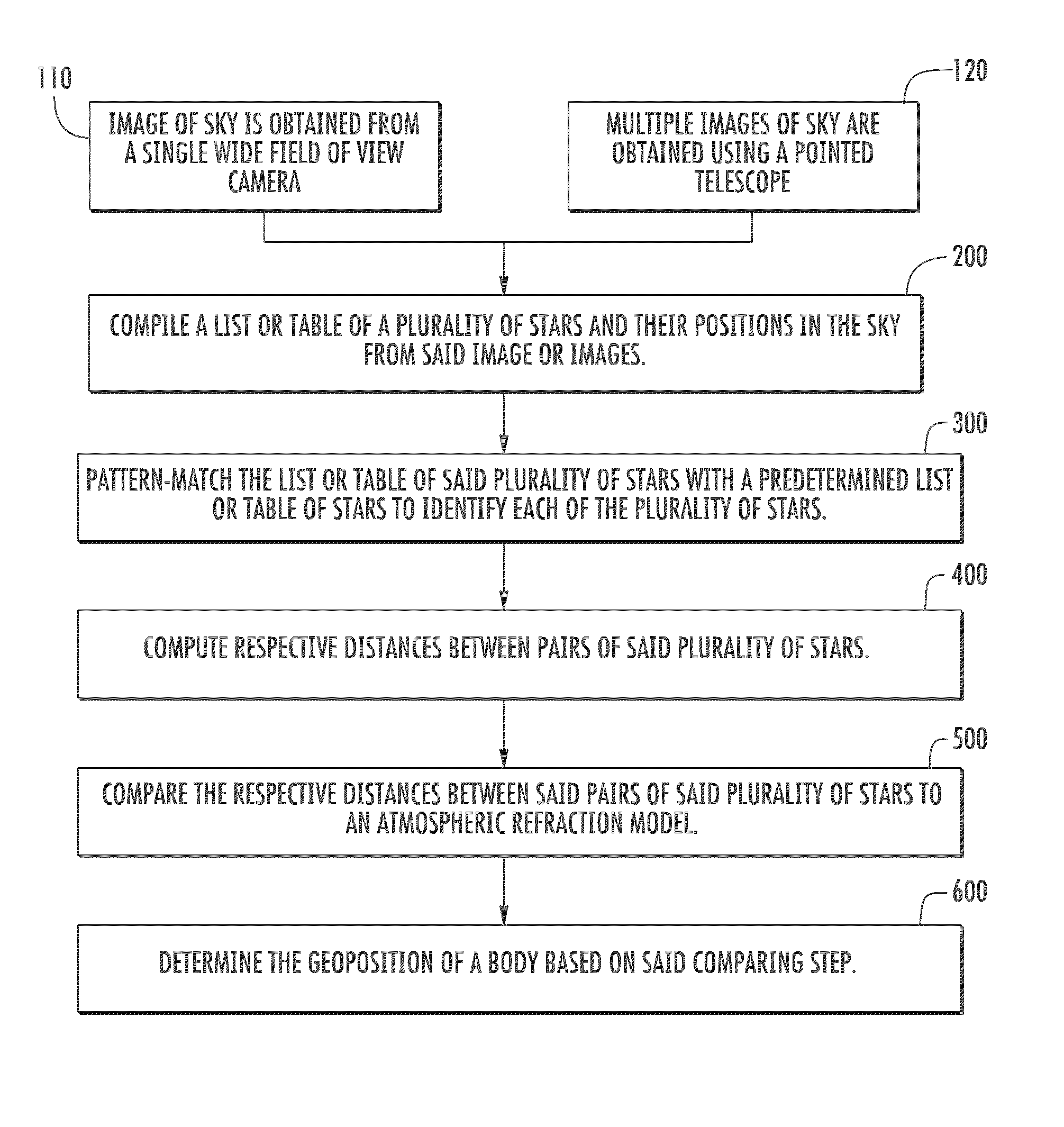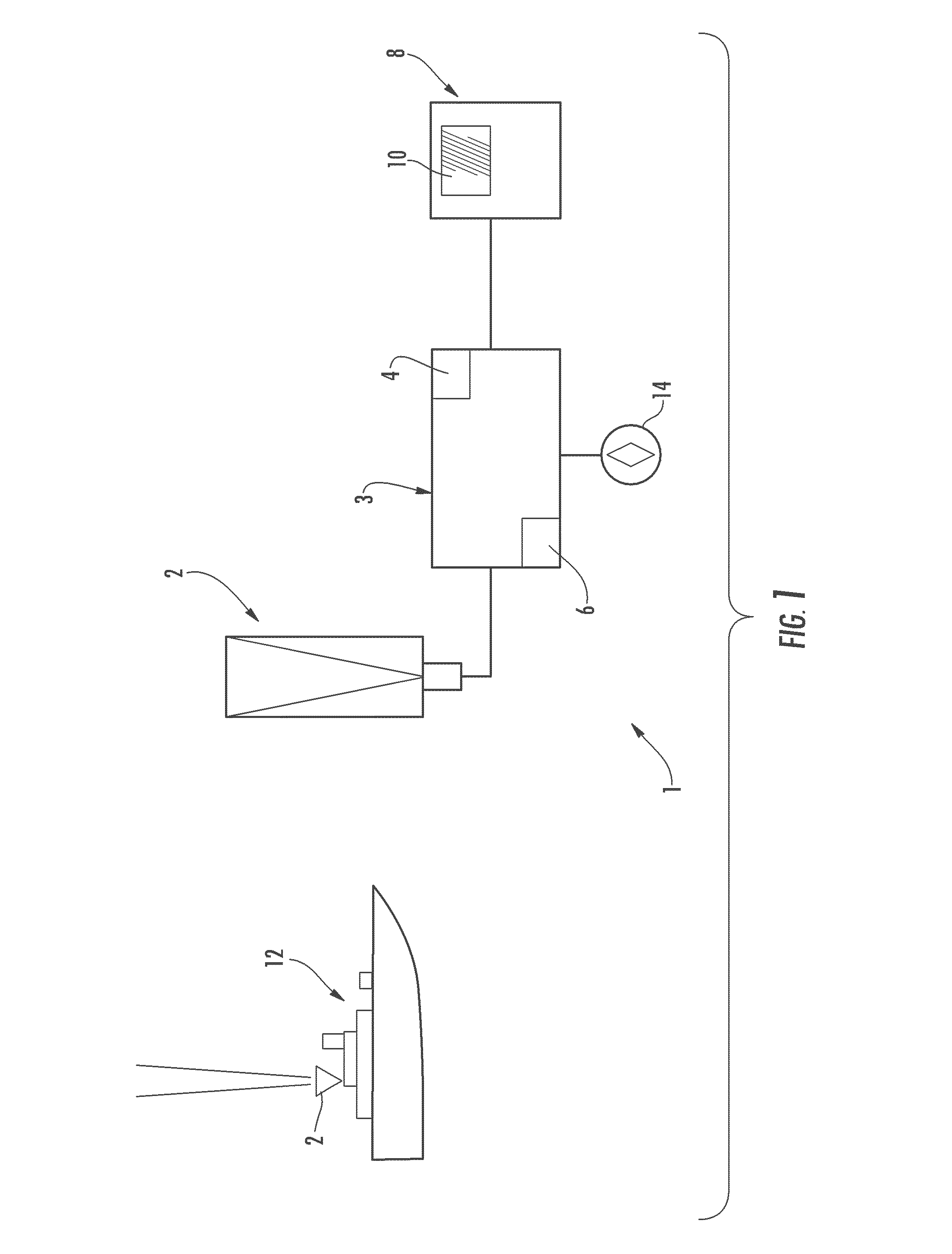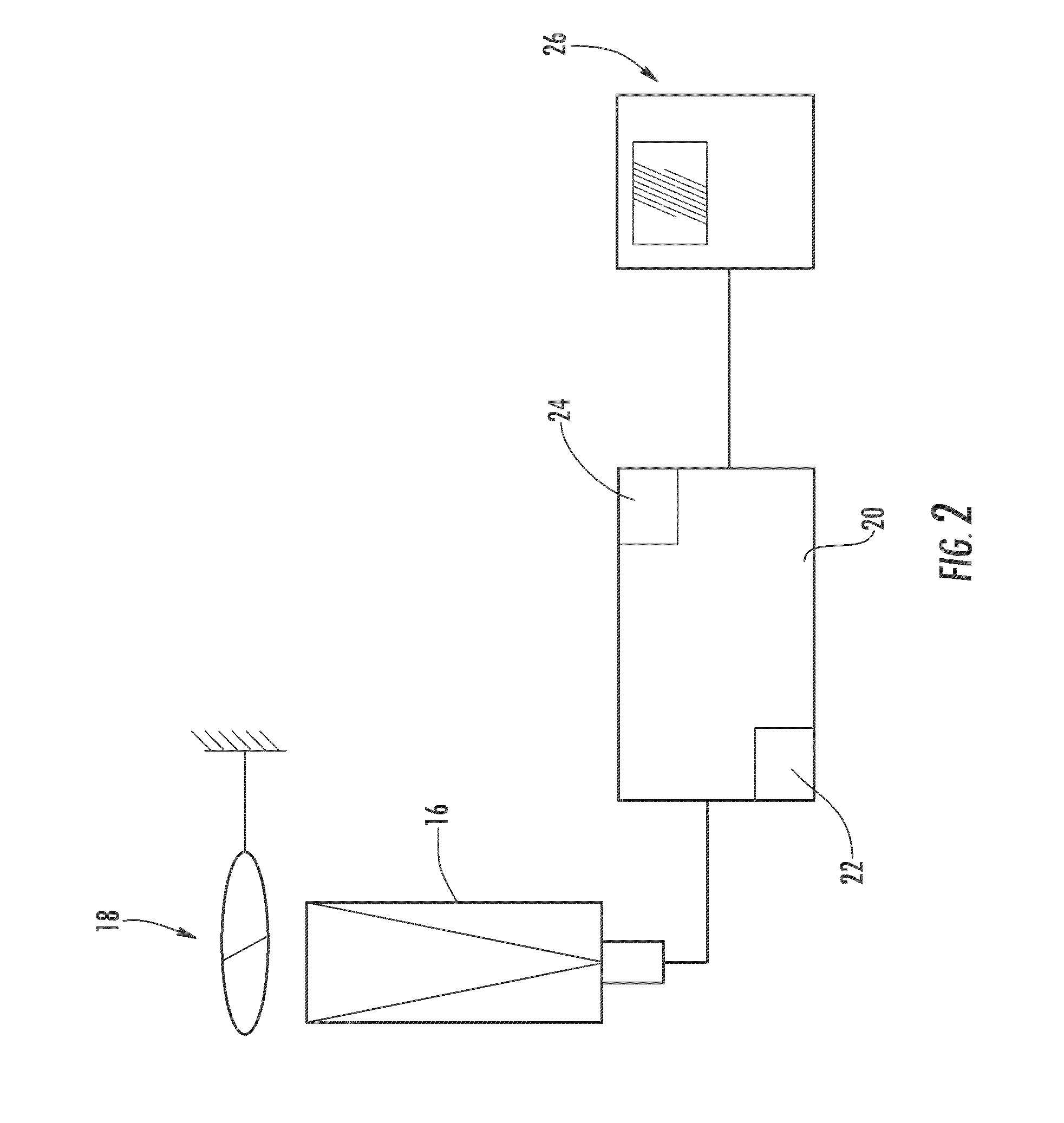Geoposition determination by starlight refraction measurement
a technology of starlight refraction and position determination, applied in navigation instruments, instruments, image enhancement, etc., can solve the problems of unavoidable subject matter of method of position determination, high accuracy on a moving platform, and sensitive to knowledg
- Summary
- Abstract
- Description
- Claims
- Application Information
AI Technical Summary
Benefits of technology
Problems solved by technology
Method used
Image
Examples
second embodiment
[0026]As in the first embodiment, the second embodiment uses either a single image of the sky taken with a sensor 16 such as a wide-field-of-view camera, or uses multiple images of single stars taken with a sensor such as a pointed telescope. Again, a gyroscope 14 can be used to track, and correct for, rotation of the platform between star sightings. In either case, a single table of all stars in the image or images is compiled and pattern-matched to identify each star in the image or images.
[0027]In the second embodiment, two images of each star (or the entire sky) are then taken simultaneously, or nearly simultaneously, using a sensor 16 or sensors which can detect two different frequency bands. In one embodiment, the first frequency band is the visible frequency band, and the second frequency band is the infrared frequency band. Because the atmosphere refracts each frequency of light by a different amount, the displacement between the two frequencies can be measured for each star...
PUM
 Login to View More
Login to View More Abstract
Description
Claims
Application Information
 Login to View More
Login to View More - R&D
- Intellectual Property
- Life Sciences
- Materials
- Tech Scout
- Unparalleled Data Quality
- Higher Quality Content
- 60% Fewer Hallucinations
Browse by: Latest US Patents, China's latest patents, Technical Efficacy Thesaurus, Application Domain, Technology Topic, Popular Technical Reports.
© 2025 PatSnap. All rights reserved.Legal|Privacy policy|Modern Slavery Act Transparency Statement|Sitemap|About US| Contact US: help@patsnap.com



